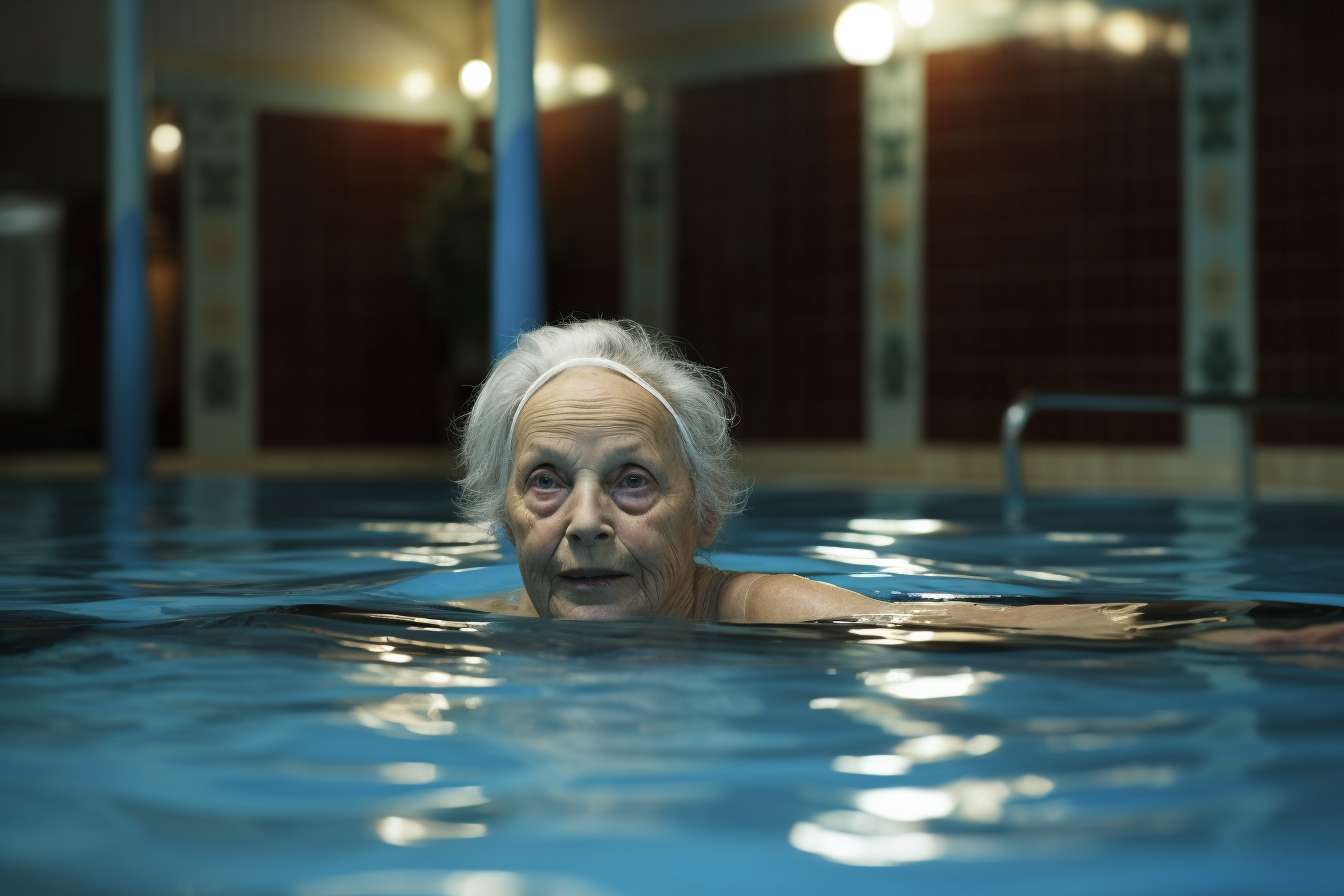Explore Information About 4 Low-Impact Swim Workout Exercises for Older Adults
Discover 4 low-impact swim workouts that are joint-friendly and suitable for older adults. This guide covers each exercise for older adults, its benefits, and tips for getting started, offering an enjoyable way to stay active and support mobility in the water.

What are 4 low-impact swim workouts suitable for older adults?
-
Water Walking: This simple exercise involves walking through chest-deep water, focusing on proper posture and engaging the core muscles. Start with 5-10 minutes and gradually increase the duration as fitness improves. For added resistance, try walking backwards or sideways.
-
Aqua Jogging: Similar to water walking but with a higher intensity, aqua jogging mimics the motion of running without the impact on joints. Use a flotation belt for support and maintain an upright posture while moving your arms and legs as if jogging on land. Begin with 10-15 minute sessions and increase as endurance builds.
-
Flutter Kicks: Hold onto the pool’s edge or a kickboard and extend your legs behind you. Kick from the hips with straight legs, keeping your feet just below the water’s surface. Start with 30-second intervals, alternating with rest periods, and gradually increase duration.
-
Arm Circles: Standing in chest-deep water, extend your arms out to the sides at shoulder height. Make small circles with your arms, gradually increasing the size of the circles. Perform 10-15 circles forward, then reverse the direction. This exercise helps improve shoulder mobility and strength.
How do these 4 low-impact swim exercises benefit joint health and mobility?
The buoyancy of water reduces the impact on joints while providing gentle resistance, making these exercises ideal for older adults. Water walking and aqua jogging improve cardiovascular fitness and leg strength without stressing the knees and ankles. Flutter kicks enhance leg flexibility and core strength, promoting better balance and stability. Arm circles target the upper body, improving shoulder mobility and reducing stiffness.
These aquatic exercises also help maintain and increase range of motion in joints, which is crucial for older adults. The water’s resistance provides a natural form of strength training, helping to preserve muscle mass and bone density. Additionally, the hydrostatic pressure of water can reduce swelling and improve circulation, further benefiting joint health.
What equipment can enhance a water-based workout?
Several pieces of equipment can add variety and intensity to aquatic workouts:
-
Flotation Belts: These provide buoyancy for deep-water exercises like aqua jogging, allowing users to maintain proper form without touching the pool bottom.
-
Kickboards: Useful for flutter kicks and other leg-focused exercises, kickboards help isolate lower body movements and provide support.
-
Water Dumbbells: These foam dumbbells add resistance to upper body exercises, helping to build arm and shoulder strength.
-
Aqua Noodles: Versatile pool noodles can be used for balance, support, or resistance in various exercises.
-
Webbed Gloves: These increase resistance for arm movements, enhancing upper body workouts.
-
Ankle Weights: Designed for water use, these weights add challenge to leg exercises but should be used cautiously and under professional guidance.
When introducing new equipment, start slowly and focus on proper form to avoid overexertion or injury.
How can beginners start a safe swimming routine?
For older adults new to aquatic exercise, following these steps can ensure a safe and enjoyable experience:
-
Consult a healthcare provider: Before starting any new exercise regimen, get clearance from a doctor, especially if you have any existing health conditions.
-
Start with shallow water: Begin exercises in waist-deep water to build confidence and maintain stability.
-
Focus on proper form: Prioritize correct technique over intensity or duration to prevent injury and maximize benefits.
-
Gradually increase intensity: Begin with short sessions (10-15 minutes) and slowly extend the duration as fitness improves.
-
Join a class: Many pools offer water aerobics or aqua fitness classes specifically designed for seniors, providing instruction and social support.
-
Stay hydrated: Even though you’re in water, it’s important to drink plenty of fluids before, during, and after your workout.
-
Use the buddy system: Exercise with a friend or family member for safety and motivation.
What tips help maintain consistency in aquatic exercise?
Maintaining a regular aquatic exercise routine can be challenging, but these strategies can help:
-
Set realistic goals: Start with achievable targets and gradually increase them to stay motivated.
-
Create a schedule: Establish a regular workout time that fits your daily routine.
-
Track progress: Keep a log of your exercises, duration, and how you feel afterward to monitor improvements.
-
Vary your routine: Incorporate different exercises and equipment to prevent boredom and target various muscle groups.
-
Join a group or class: The social aspect of group exercise can provide accountability and make workouts more enjoyable.
-
Reward yourself: Celebrate milestones in your aquatic fitness journey to stay motivated.
-
Listen to your body: Adjust your workout intensity based on how you feel, and don’t push through pain.
-
Stay warm: Use a swim cap and consider wearing a light wetsuit if pool temperatures are cool to ensure comfort during your workout.
By incorporating these low-impact swim exercises into their fitness routine, older adults can enjoy the numerous benefits of aquatic workouts while minimizing stress on their joints. Remember to start slowly, focus on proper form, and consult with healthcare professionals when beginning any new exercise program.
This article is for informational purposes only and should not be considered medical advice. Please consult a qualified healthcare professional for personalized guidance and treatment.




